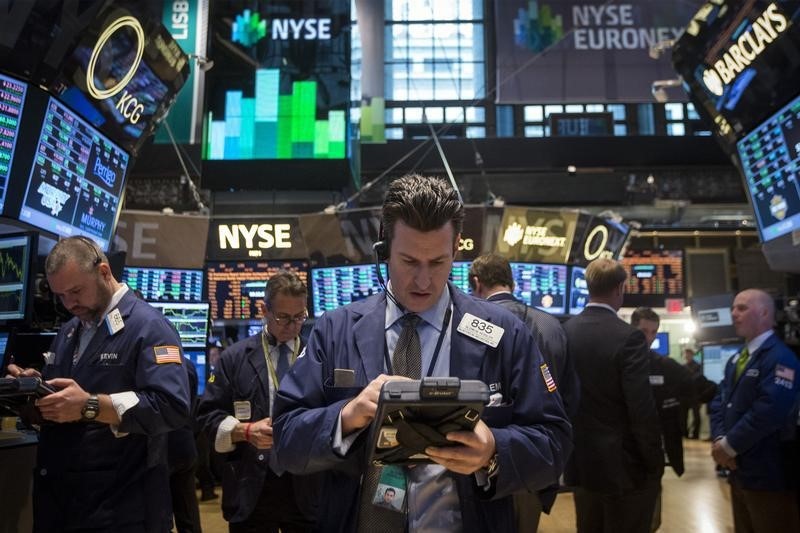Select Language

Investing.com - The S&P 500 closed lower Thursday after disappointing sales outlook from big-box retailer Walmart raised concerns about the consumer and underlying economic strength.
At 4:00 p.m. ET (21:00 GMT), the benchmark S&P 500 fell 0.4%, the Nasdaq Composite fell 0.5% and the 30-stock Dow Jones Industrial Average slipped by 450 points or 1%.
Walmart sales outlook spooks markets
Walmart (NYSE:WMT) fell more than 6% after unveiling an outlook for sales in its 2026 fiscal year that were below forecasts, in a potential sign that the big-box retailer may feel the impact of fading optimism among inflation-hit consumers.
Analysts have widely viewed the ubiquitous chain that offers everything from retail goods to groceries as a possible bellwether for the state of the U.S. consumer during the early months of 2025.
Arkansas-based Walmart said it expects annual consolidated net sales to increase in the range of 3% to 4%, versus analyst projections of a 4% uptick, according to LSEG data cited by Reuters.
The pullback in Walmart, however, is an opportunity for investors to buy the stock "aggressively," Truist Securities said in a recent note, citing market chain gains and increased margins.
Still the warning from Walmart rattled other retailers, with Target Corporation (NYSE:TGT) and Costco Wholesale Corp (NASDAQ:COST) also trading in the red.
Meanwhile, U.S.-listed shares in Alibaba (NYSE:BABA) rose by more than 8% after the Chinese e-commerce titan reported better-than-anticipated third-quarter revenue.
Carvana (NYSE:CVNA) shares slumped 11%, as analysts flagged a lack of details around the used-car platform's current year outlook that overshadowed strong returns in the fourth quarter.
Birkenstock's (NYSE:BIRK) stock price slipped 1% after the sandal maker left its annual margin forecast unchanged despite receiving a boost from holiday-season sales.
Fed speak continues to point toward long pause
St. Louis Federal Reserve President Alberto Musalem said Thursday that while he continues to expect inflation slow toward the Fed's 2% target, he backs the rate cuts to remain on hold "until inflation convergence is assured."
The remarks mainly echoed that other Fed members calling for the evidence of disinflation progress. Atlanta Fed president Raphael Bostic, however, leaned slightly dovish on Wednesday, forecasting that the Fed will cut rates twice this year, though acknowledged that uncertainty has increased.
(Scott Kanowsky contributed to this report.)

